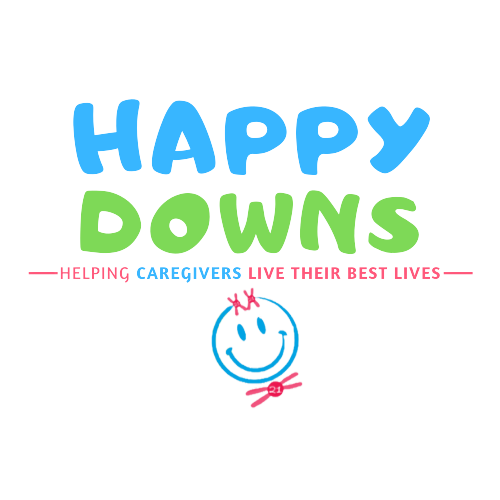Goal setting can be life-changing for teens with Down Syndrome. It empowers them to build independence, tackle challenges, and grow their confidence. For family caregivers, helping teens set and achieve goals is a powerful way to foster personal growth and create a supportive environment for success. This guide offers practical strategies, real-life examples, and actionable advice to make goal setting a positive and rewarding experience for everyone involved.
Why Goal Setting Matters For Teens
Setting goals is not just about ticking boxes; it’s about unlocking potential and paving the way to greater independence. Here are some key benefits:
- Boosts Confidence: Achieving even small goals can be a major confidence boost, encouraging teens to take on bigger challenges.
- Fosters Independence: Mastering skills like managing time or cooking fosters self-reliance and prepares them for adult life.
- Encourages Resilience: Overcoming obstacles during the process teaches teens to handle setbacks with a positive mindset.
- Strengthens Family Bonds: Collaborative goal setting can bring families closer together, creating an environment of shared achievement and support.
Understanding Unique Needs: The Foundation For Effective Goal Setting
Before diving into goal setting, it’s crucial to understand the unique needs and preferences of your teen. Here’s how:
- Learn Their Strengths and Interests: Observe what excites and motivates them. Is it a hobby, a social activity, or a skill they want to learn?
- Involve Mental Health Professionals: Consulting with therapists or counselors can help create a tailored approach that aligns with your teen’s cognitive and emotional needs.
- Prioritize Open Communication: Talk openly with your teen about their goals and listen to their input. This ensures that their goals are meaningful and aligned with their aspirations.
- Customize the Approach: Use tools like visual aids, favorite activities, or routines to make goal setting engaging and effective.
A Step-By-Step Goal Setting Process
Creating achievable goals for teens with Down Syndrome requires a structured approach. Here’s a step-by-step guide:
1. Identify Interests and Strengths
- Begin by exploring activities they enjoy or areas where they want to improve. For example, if your teen loves art, a goal could be to complete a new painting each month.
2. Use the SMART Goal Framework
- Specific: Define the goal clearly. For example, “Learn to cook three simple recipes.”
- Measurable: Include a way to track progress. For instance, “Cook one recipe each week.”
- Achievable: Ensure the goal is realistic given their abilities.
- Relevant: Align the goal with their interests or life skills.
- Time-bound: Set a deadline, like “By the end of three months.”
3. Break Goals Into Smaller Steps
- Divide larger goals into manageable milestones. For example, if the goal is to learn a recipe, the steps could be:
- Select a recipe.
- Practice measuring ingredients.
- Cook with assistance.
- Cook independently.
4. Create a Visual Roadmap
- Use tools like charts, calendars, or apps to visualize the journey. Mark achievements with stickers or colors to keep motivation high.
5. Schedule Regular Check-Ins
- Review progress weekly or biweekly. Celebrate successes and adjust the plan if needed.
Integrating Goals Into Daily Life
Incorporating goals into daily routines can make the process feel natural and less overwhelming:
- Morning Routines: Set a goal to wake up at the same time every day.
- Household Chores: Create small tasks, like organizing toys or setting the table, as part of their responsibilities.
- Social Skills: Practice greeting others or maintaining eye contact during family gatherings.
Leveraging Technology For Goal Achievement
Technology can be a valuable ally in goal-setting. Here are some tools to consider:
- Scheduling Apps: Apps like TimeTree or Cozi help with organizing and visualizing schedules.
- Habit Trackers: Use simple apps like Habitica to track progress with engaging visuals.
- Educational Games: Apps designed for cognitive development can make learning new skills fun and interactive.
Encouraging Motivation: Keeping Teens Engaged
Maintaining motivation is key to achieving goals. Here are practical ways to keep the momentum:
- Celebrate Small Wins: Acknowledge every milestone, no matter how minor. A sticker chart or a special treat can go a long way.
- Incorporate Rewards: Tie rewards to achievements, like choosing a favorite activity or enjoying extra screen time.
- Share Success Stories: Introduce them to real-life examples of peers or role models who have overcome challenges.
- Foster a Positive Environment: Provide consistent encouragement and emphasize their progress rather than setbacks.
Overcoming Obstacles And Celebrating Achievements
Challenges are a natural part of goal setting. Here’s how to address them effectively:
1. Tackle Setbacks with Creativity
- If progress stalls, adjust the goal or break it into even smaller steps. For example, extend deadlines or simplify tasks.
2. Emphasize Resilience
- Teach your teen that setbacks are learning opportunities. Share stories of perseverance to inspire them.
3. Celebrate Every Success
- Host a mini-celebration for milestones, like inviting family to acknowledge their progress or sharing their achievement on social media (with their consent).
4. Reflect and Plan Ahead
- After achieving a goal, reflect on what worked and what didn’t. Use these insights to set the next set of goals.
Empowering Teens To Dream Big
Goal setting is a journey of growth, not just for teens with Down Syndrome but for their entire families. By supporting your teen in setting and achieving meaningful goals, you’re helping them build confidence, resilience, and independence. Remember, every small step forward is a victory. Together, you can create a future filled with possibilities and successes. Let’s help them dream big—and achieve even bigger!


